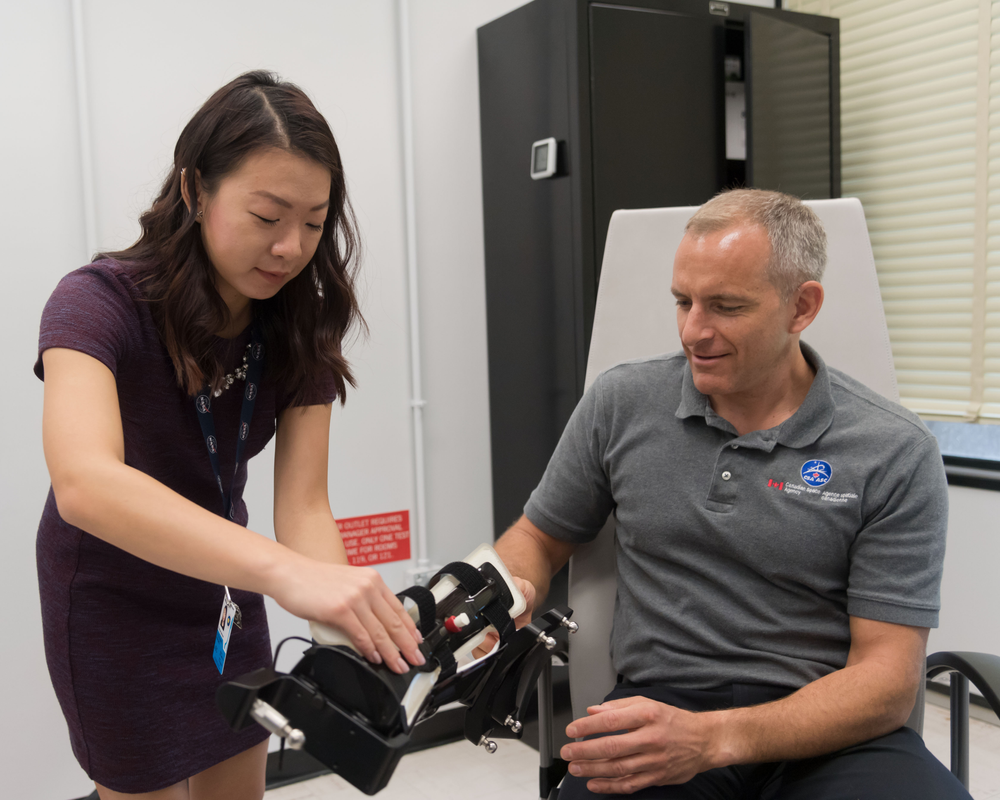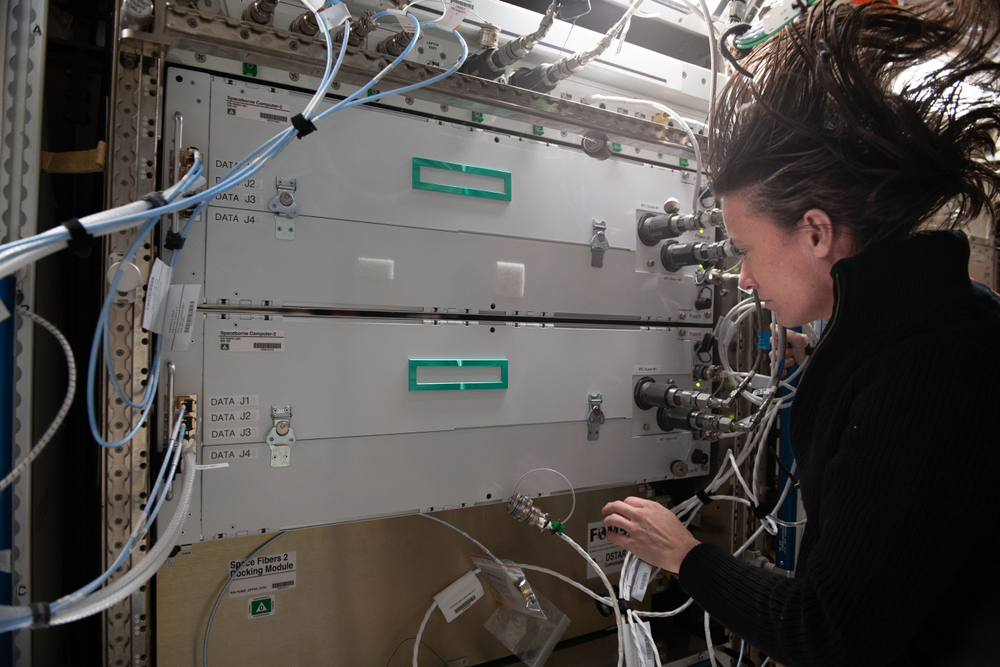Station Science Top News: Jan. 4, 2024
Measurements of bone curvature can predict microstructural changes in the bones of astronauts during and after spaceflight. This finding enhances the understanding of how microgravity, calcium disruption, and altered bone metabolism experienced in space affect bone adaptation. This understanding could help protect crew members on long-duration spaceflight.
During spaceflight, astronauts lose bone approximately 10 times faster than the rate seen with age-related bone loss. The Canadian Space Agency's (CSA) TBone investigation studied the effect of spaceflight on bones using serial images from three-dimensional high-resolution peripheral quantitative computed tomography (HR-pQCT), which revealed subject-specific microstructural bone adaptation. The data verifies that these measurements can model bone adaptation during spaceflight, although prediction of short-term outcomes is more accurate than long-term ones. The ability to predict future bone loss informs development of countermeasures for future missions to the Moon and Mars.

***
Researchers found no differences between ground and on-board runs of commercial off-the-shelf processors. This result informs design of higher-power computer systems that can withstand the harsh radiation environment on future space missions.
Spaceborne Computer-2 explores using commercial off-the-shelf computer systems to process data faster in space. These processors use smaller and lighter hardware and can function more efficiently in the radiation environment of space with minimal effect on computational power. Future space missions need more onboard autonomy given intermittent contact with Earth and the large amounts of data produced by onboard instruments. This requirement places greater demands on traditional flight hardware, which provides only modest computing power.

***
The International Space Station Program recently addressed media interest in a couple of wayward tomatoes on the space station. The found fruit garnered interest from CBS News, Space.com, The New York Times, NPR, Business Insider, and The Guardian, among other outlets. Much of the coverage mentioned plant research on the space station.
Read our piece here.







